World press bowing to the stars
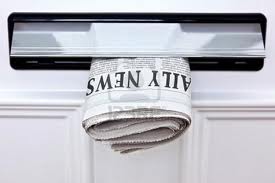
Like most British people, the press is close to everyone. Nearly every household gets regular morning delivery of a daily newspaper, or picks one up on his way to work. Sunday morning is spent leafing through three or four thick Sunday papers and their supplements. What a great way to spend a rainy blowy winter Sunday.

Baby
Whether you prefer the pithy sensationalist headines of The Sun, the reserved but concerned sayings of The Mail, or the dry distanced observations of the Telegraph, every paper seems to bring a slightly different slant on the same stories, and some report on things that the others don't. My own favourite was, and still is, The Telegraph, a paper that has more substance and culture than the others ( to generalise), but really most of all because they had the most comprehensive sports reporting. In my youth, their specialist cricket and soccer journalists regaled me with details of what would be minor incidents for others. The statistical analysis was complete too, giving all of the right timings and titbits of complementary information. The other papers didn't give this.
Addicted as I was to the cricket and soccer pages, the reporting on tennis was miserable. Together with almost non-existent coverage on TV (except for Wimbledon) , the press failed to give any perspective on the world game, that admittedly had just started to organise a world professional tour, but nevertheless in many sports professionalism was way behind tennis. For example field hockey, or boxing, or rugby union had much more complete reporting than tennis, and most of the sportspeople in the reports were amateurs. So that can't be the reason.
The reason is all about supply and demand.
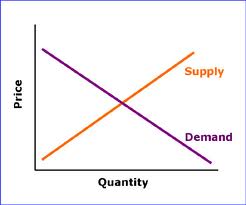
Reporting Demand
Apart from Wimbledon there was no demand for any sort of reporting. The public didn't know the players, were unable to follow them in their travails all through the year (what was a clay court for heaven's sake?), and the early TV pictures didn't encourage mass viewing like The Big Match, Test Match Special, Morecambe and Wise, or Coronation Street. To become part of the mass audience you needed to identify with the players, and follow what they are doing every week. This was impossible with tennis. We simply didn't know the players and never were going to know them either, the schedule and media coverage would never allow it.
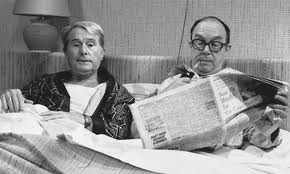
Moving on thirty years you'd think things have changed.
Indeed they have, but tennis has done one enormous jump. TV coverage of the ATP and WTA tours means you can follow your favourite players, like any good soap opera throughout the year. If some tournaments don't get the TV coverage, you can hook into any match at any time on the internet, and it doesn't cost a fortune. I'd love to do that, I just don't have time to watch all that tennis.

Satellite
Where the jump has been made is in the newspaper reporting, the journalists. Where coverage of the world game has gone down to picking up the latest close-up of a Djokovic wink, the press refuses to report with any of the pizzazz which TV brings.
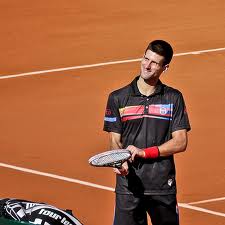
Darling of the Press
My own paper, The Telegraph, does report on tennis, more so than any other paper, but the problem is that the press, and in particular this type , is too busy looking for a critical angle behind any story, preferring the controversy to the banal. Tennis is such a clean, well-officiated game, at pro level, that these controversies cannot be found. In soccer we have players who commit acts of racism that get dragged through the criminal courts, players steal each others' wives, and the histrionics of a player are far more important than their sporting contributions.
In cricket, that game where even a blocked defensive shot is loaded with strategic and contextual significance, a press reporter can pick up on countless details from even a rain-interrupted day, and you've got 150 words of fascinating copy.
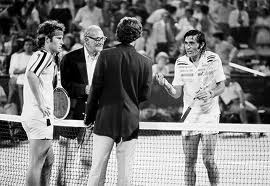
Man mix
With tennis you've got forehands and backhands, with the occasional net sortie, or ace to liven up proceedings. In the old days bad boys like Connors, Nastase or McEnroe used to have occasional, highly funny, run-ins with match officials, but a stop has been put to this with severe, crippling, fines for the offendors. Tennis being such an individual game, a player cannot afford to tarnish his image with such disrespectful, time-wasting, disconcerting, incidents.The game simply doesn't have controversy, doesn't get bad boys, or bad incidents. The press have got nothing to write about.
OK, you can write about a classic backhand pass threaded through the eye of a needle by Murray, and you can even build it up by insisting on the fact that it was a big point. But you capture this inadequately on paper.
The TV is much better at drawing out the drama of a tennis match. You've got to watch it live. You've got to follow Djokovic as if you were following a soap star, all year round. You 've got to follow his game over a ten month season, seeing how his game adapts and develops. Now the fine details can be seen, and this should make great reporting for the press. But it still doesn't , because the TV does it so much better.
I'd also say that the general public have little appreciation for what is a very technical game. All of those adjustments that Djokovic makes to keep himself at the top through a season, are essentially dry technical adjustments. Most readers don't understand that at this level, nor do they care. Most people have never played the game themselves, so simply won't understand. The journalist would be wasting his breath.

Pyjama Journalist
The pyjama press has grown up. OK, so I'm one of them, and I'd never like to slag them off. The advantage of the pyjama press is that we are not real journalists. We are armchair fanatics. We have extensive knowledge. We follow the pro, and maybe even the amateur, game, as if our lives depended on it. We have a hugely advantageous position compared to the paper press, or their website equivalents. We are so much closer to the players and their lives.
The paper press is going to continue to lie in third place I'm afraid. TV, internet, daily newspapers.
Have A Great Story About This Topic?
Do you have a great story about this? Share it!
SIGN UP A COACH TODAY



